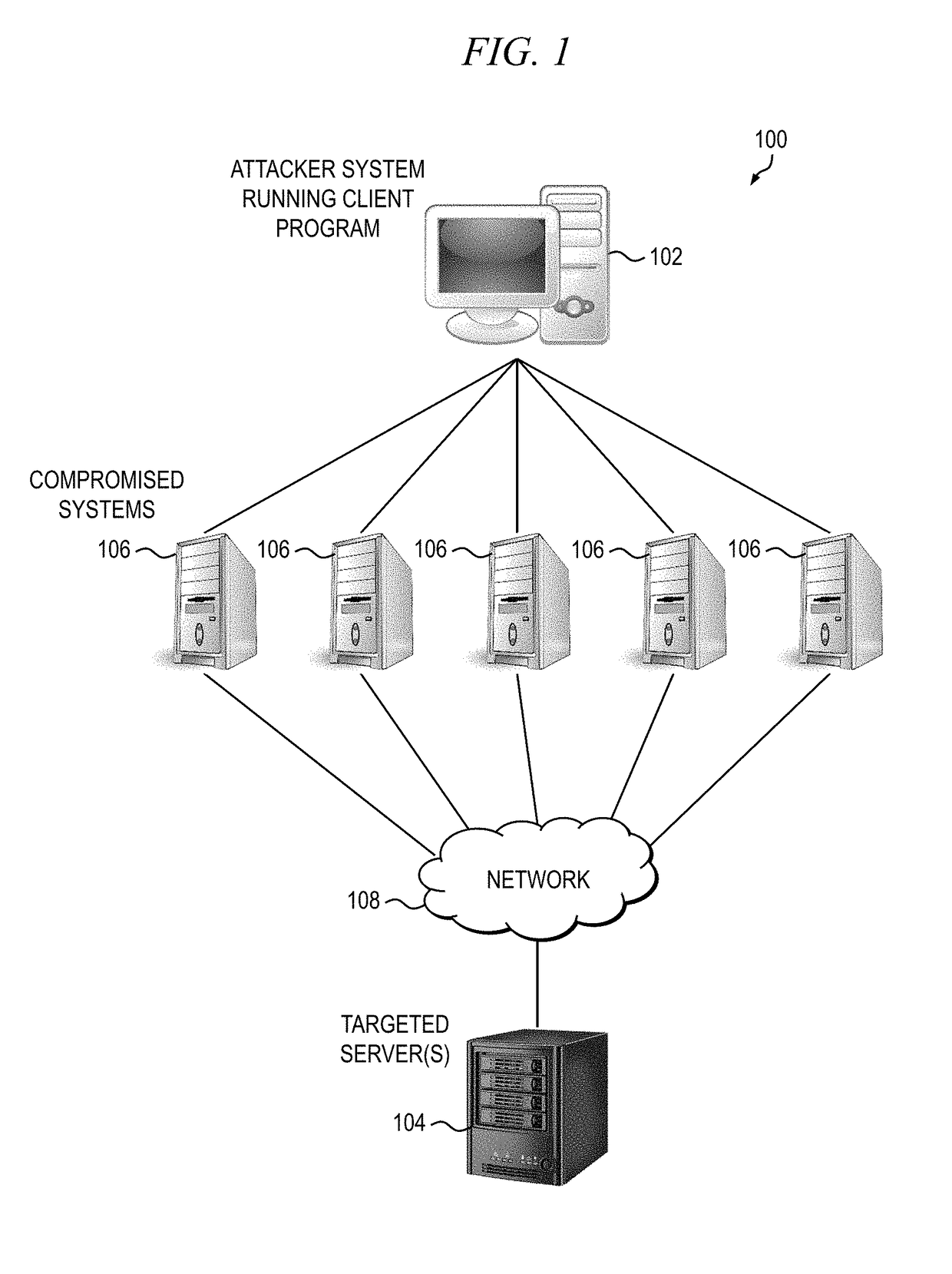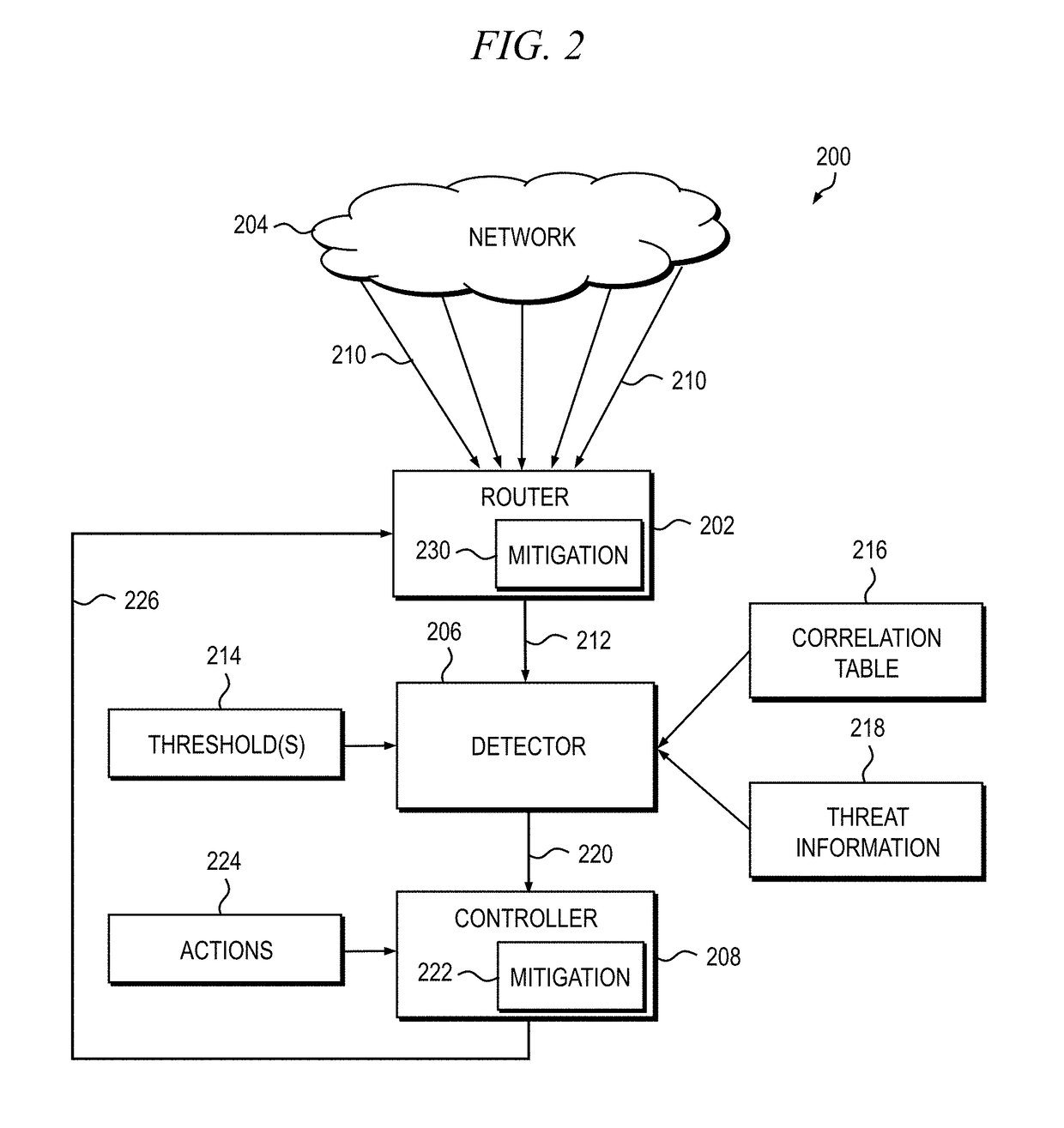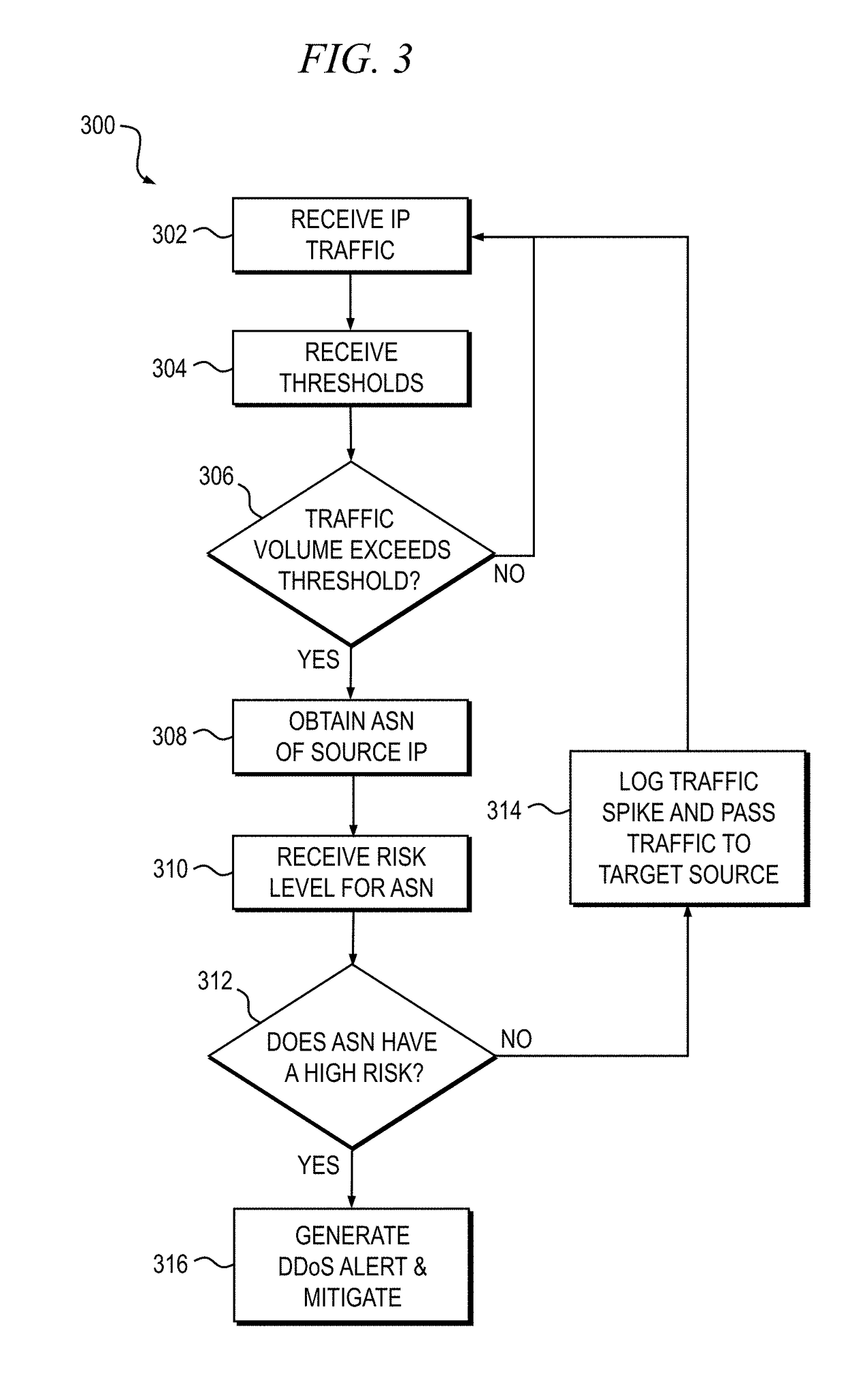Distributed denial-of-service attack detection and mitigation based on autonomous system number
a distributed denial-of-service and autonomous system technology, applied in the field of electrical, electronic and computer arts, can solve problems such as affecting the performance of the system, affecting the reliability of the system, and forcing the system to slow down or even crash and shut down, so as to achieve the effect of increasing system overhead and complexity, and being easy to integra
- Summary
- Abstract
- Description
- Claims
- Application Information
AI Technical Summary
Benefits of technology
Problems solved by technology
Method used
Image
Examples
Embodiment Construction
[0024]Principles of the present disclosure will be described herein in the context of apparatus and methods for detecting and mitigating distributed denial-of-service (DDoS) attacks in a networked computing environment. It is to be appreciated, however, that the specific apparatus and / or methods illustratively shown and described herein are to be considered exemplary as opposed to limiting. Moreover, it will become apparent to those skilled in the art given the teachings herein that numerous modifications can be made to the embodiments shown that are within the scope of the appended claims. That is, no limitations with respect to the embodiments shown and described herein are intended or should be inferred.
[0025]As previously stated, DDoS attacks are by definition distributed, and therefore it can be very difficult to accurately detect and mitigate attack traffic when the attacking source IP addresses are so widespread. Furthermore, a growing trend among DDoS attackers is to utilize...
PUM
 Login to View More
Login to View More Abstract
Description
Claims
Application Information
 Login to View More
Login to View More - R&D
- Intellectual Property
- Life Sciences
- Materials
- Tech Scout
- Unparalleled Data Quality
- Higher Quality Content
- 60% Fewer Hallucinations
Browse by: Latest US Patents, China's latest patents, Technical Efficacy Thesaurus, Application Domain, Technology Topic, Popular Technical Reports.
© 2025 PatSnap. All rights reserved.Legal|Privacy policy|Modern Slavery Act Transparency Statement|Sitemap|About US| Contact US: help@patsnap.com



